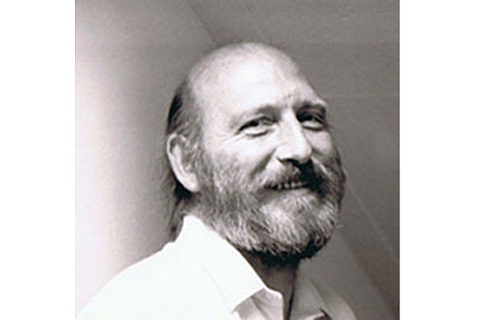Pyramid Stage designer Bill Harkin passes away
- Details

Harkin grew up in Liverpool, attending secondary school in Sefton Park before embarking on painting and 3D construction studies, “with the occasional lunch time Beatles gig for 1 shilling at the Cavern.” Soon, Harkin was showing his work at The Liverpool Academy’s shows at the Walker Art Gallery as well as in art and architecture exhibitions for Liverpool University and The John Moores Painting Prize. “Then, somewhat briefly, I started a course in architecture,” he revealed in memoirs on the Pyramid Stage Glastonbury Festival website. “The tedium of course work was more than I could take, I was much more excited by the theatre and the new fabric structures of Frei Otto in Stuffgart.”
Having purchased two of Harkin’s constructions, choreographer and director Bill Harpe invited him to design the stage set, lighting and projection for a production of Stravinsky’s The Soldiers Tale at Liverpool’s Bluecoat arts centre. He went on to work with Graham Frood on Merseyside Unity Theatre’s in-the-round production of Boulevard Durand at St George’s Hall.
Harkin then “left Liverpool for London and the world” before returning to England in 1970 where a moment of meditation whilst helping a friend relocate to Swanage lead him to Glastonbury Tor. There he met a group of kindred spirits, including Tony Andrews (now of Funktion-One), Andrew Kerr and Arabella Churchill. “They said they were meeting a farmer the following day - Michael Eavis who had staged a small music event, ‘Worthy Farm Pop Festival’ some weeks before,” Harkin recalled. “They wanted to stage a free festival the following year.”
This would become 1971’s Glastonbury Fayre, for which Harkin conceived, designed and built (with a team of volunteers) the first Pyramid Stage. Situated above the Glastonbury-Stonehenge ley line, it was constructed out of quick-form scaffolding and expanded metal, covered with translucent panels.
The unique shape of the stage came to Harkin in a dream: “[In the dream] I was standing to the rear of an open-air stage next to a drum riser, looking towards the audience that someone was addressing. There were two beams of light forming a pyramid in the sky … the pyramidal form suggested by the light beams gave me a start point. I made a preliminary sketch of how it might work as a performance space and, thinking it was a good idea, made a cardboard Pyramid Stage model.”
In realising the first incarnation of the Pyramid Stage, Harkin specified “over 5 million light reflecting facets over its surface”, which ultimately gave the early structure its appearance of a 'pyramid of light'. “The audience were amazed by the brilliance of the reflected light, when seeing the Pyramid lit by only two Mole-Richardson 10kW lights (how’s that for green?),” Harkin said.
A permanent version of the Pyramid Stage was constructed in 1981 and remained in place until it burned down in 1994, later to be replaced. The structure remains one of the most iconic stage designs in the world.
Harkin went on to design stages for the The Rolling Stones, Roskilde Festival, Paul McCartney, the Eden Project and more.
Posting on the Glastonbury Fair 1971 Facebook group , his son Will Harkin said: “It is with great sorrow in my heart that I have to inform you my father, industry legend Bill Harkin, passed away yesterday. Bill was the most incredible man with the power to touch everyone who met him.
“Bill was a true pioneer of the event industry. His creative vision was on another level, his work now etched into our world forever. Even though Bill is no longer with us, his stage designs at Roskilde, Eden Project and Glastonbury will continue to help shine much needed light and love into our world.
“Bill was also a kind and loving father who cared and provided for his family for so many years. Good bye Bill. Thank you for a most wonderfully unique and magical journey with you. We love you Bill.”
Paying tribute to Harkin, Glastonbury Festival's Michael Eavis said: "His enthusiasm and dedication led to what we have now. Thank you so much Bill!"
In a post on Funktion-One’s Facebook page, Tony Andrews said of his friend: “I am sad to learn this evening that a dear friend has passed on. Bill Harkin was an inspiring human being who introduced me to the omnipresence of cosmic geometry during the time we were involved in the founding of Glastonbury Festival 1970/71. We also worked together again on Glastonbury designing and implementing the first permanent Pyramid Stage some 10 years afterwards.
“When I first met Bill at the foot of Glastonbury Tor he appeared out of nowhere bearing tea and looking just how you would imagine the wizard Merlin to look. The whole effect greatly enhanced by a crystalline starry sky that he seemed to be at one with. He was an inspiration and became a great friend. I hope he found me to be the same.”
To read more about Bill Harkin’s life and work, click here.
For more on the early days of Glastonbury Festival, see Jerry Gilbert’s history of festival sound in LSi March 2017.
















